Posted on April 30th, 2018 by Mary Lord
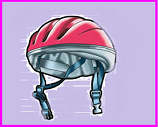 Students in grades 9 and 10 are introduced to the biomechanical characteristics of helmets and challenged to incorporate them into helmet designs. They come to understand the role of engineering associated with safety products – in this case protecting the brain and neck of a bicyclist in the event of a crash, with the design dependent on the user’s needs and specifications.
Students in grades 9 and 10 are introduced to the biomechanical characteristics of helmets and challenged to incorporate them into helmet designs. They come to understand the role of engineering associated with safety products – in this case protecting the brain and neck of a bicyclist in the event of a crash, with the design dependent on the user’s needs and specifications.
Read More
Filed under: Class Activities, Grades 9-12, Lesson Plans | Comments Off on Build a Bike Helmet
Tags: bicycle, bicycle helmet, Class Activities, EcoHelmet, Engineering Design Process, force and motion, Grades 9-12, Lesson Plan, Materials Engineering, NHTSA, Physics, Safety engineering, Sports, video
Posted on May 21st, 2016 by Mary Lord
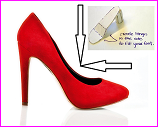 Teams of middle school students use the engineering design process to design, build, and test a pair of wearable platform or high-heeled shoes, taking into consideration the stress and strain on the wearer’s foot. They activity concludes with a “walk-off” to test the shoe designs and discuss the design process.
Teams of middle school students use the engineering design process to design, build, and test a pair of wearable platform or high-heeled shoes, taking into consideration the stress and strain on the wearer’s foot. They activity concludes with a “walk-off” to test the shoe designs and discuss the design process.
Read More
Filed under: Class Activities, Grades 6-8, Grades 6-8, Lesson Plans | Comments Off on Fancy Feet
Tags: Class Activities, Engineering Design, fashion, footwear, Grades 6-8, Lesson Plan, making, Materials Engineering, shoe design, sneaker, STEAM
Posted on December 24th, 2015 by Mary Lord
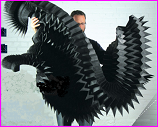 Could origami engineering be the next big thing in manufacturing? Researchers say that the Japanese art of folding paper could have practical implications ranging from minimally invasive surgical aids to highly efficient capture of solar energy and giant space telescopes that fit into a small payload. And their work has evolved into a well-funded fount of innovation.
Could origami engineering be the next big thing in manufacturing? Researchers say that the Japanese art of folding paper could have practical implications ranging from minimally invasive surgical aids to highly efficient capture of solar energy and giant space telescopes that fit into a small payload. And their work has evolved into a well-funded fount of innovation.
Read More
Filed under: Special Features | Comments Off on Origami Engineering
Tags: ASEE Prism, David Gracias, Johns Hoplins, manufacturing, Materials Engineering, MIT, origami engineering, paper folding, Penn State, STEAM
Posted on October 28th, 2015 by Mary Lord
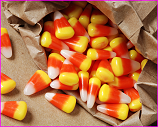 In this activity, students in grades 3 to 12 learn how design differences can affect the success of a final product by working in pairs to evaluate, design, and build a better candy bag. They must predict the volume and strength of their designs, test and redesign the bag based on its ability to hold weight, discuss findings, and share results.
In this activity, students in grades 3 to 12 learn how design differences can affect the success of a final product by working in pairs to evaluate, design, and build a better candy bag. They must predict the volume and strength of their designs, test and redesign the bag based on its ability to hold weight, discuss findings, and share results.
Read More
Filed under: Class Activities, Grades 6-8, Grades 9-12, Grades K-5 | Comments Off on Build a Better Candy Bag
Tags: build, candy bag, Class Activities, container, Design, Engineering Design Process, Grades 6-8, Grades 9-12, Grades K-5, Materials Engineering
Posted on August 28th, 2014 by Mary Lord
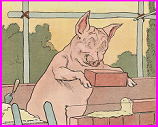 Students learn about the importance of using the right materials for the job by building three different sand castles and testing them for strength and resistance to weathering. They then discuss how the buildings are different and what engineers need to think about when using rocks, soils, and minerals for construction.
Students learn about the importance of using the right materials for the job by building three different sand castles and testing them for strength and resistance to weathering. They then discuss how the buildings are different and what engineers need to think about when using rocks, soils, and minerals for construction.
Read More
Filed under: Class Activities, Grades K-5, Grades K-5, Lesson Plans | 2 Comments »
Tags: Civil Engineering, construction, Engineering Design, Materials Engineering, Problem Solving, sand castles, soil
Posted on June 19th, 2014 by Mary Lord
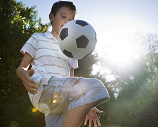 In this activity, elementary students in grades 3 to 5 learn about reverse engineering and how to collect and represent data graphically by investigating different balls and their abilities to bounce.
In this activity, elementary students in grades 3 to 5 learn about reverse engineering and how to collect and represent data graphically by investigating different balls and their abilities to bounce.
Read More
Filed under: Class Activities, Grades K-5 | Comments Off on Ball Bounce Experiment
Tags: balls, data, graph, Materials Engineering, Mathematics, Reverse Engineering, soccer, Sports
Posted on May 19th, 2014 by Mary Lord
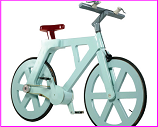 Izhar Gafni’s eureka moment came a few years ago when he heard about a cardboard canoe and wondered: “Why not a cardboard bicycle?” It took several years of trial-and-error work before he succeeded in building a reliable model that weighs a mere 20 pounds, is stronger than carbon fiber, and costs only about $10 to make.
Izhar Gafni’s eureka moment came a few years ago when he heard about a cardboard canoe and wondered: “Why not a cardboard bicycle?” It took several years of trial-and-error work before he succeeded in building a reliable model that weighs a mere 20 pounds, is stronger than carbon fiber, and costs only about $10 to make.
Read More
Filed under: Special Features | Comments Off on Cardboard Pedal Pusher
Tags: cardboard bicycle, entrepreneur, Green Technology, Ideas & Inventions, Materials Engineering, Sustainability, Systems Engineering, Transportation
Posted on November 27th, 2013 by Mary Lord
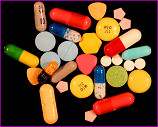 Student teams in grades 6-8 reinforce their knowledge of the digestive system and explore the concepts of simulation and the engineering design process by developing a pill coating that can withstand the churning and acidic environment of the stomach. They test the coating’s durability using a clear soda to simulate gastric acid.
Student teams in grades 6-8 reinforce their knowledge of the digestive system and explore the concepts of simulation and the engineering design process by developing a pill coating that can withstand the churning and acidic environment of the stomach. They test the coating’s durability using a clear soda to simulate gastric acid.
Read More
Filed under: Class Activities, Grades 6-8, Grades 6-8, Lesson Plans | 2 Comments »
Tags: Biology, Biomedical, Chemical Engineering, Class Activities, coating, digestion, Grades 6-8, Human Body, Lesson Plan, Manufacturing Engineering, Materials Engineering, medicine, pill
Posted on November 25th, 2013 by Mary Lord
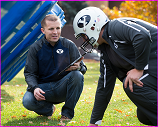 Brigham Young University engineering student Jake Merrell has created a “smart foam” that could be placed inside the helmets of football players to measure the impact of hits to the head, and could help prevent concussions while players are int the game.
Brigham Young University engineering student Jake Merrell has created a “smart foam” that could be placed inside the helmets of football players to measure the impact of hits to the head, and could help prevent concussions while players are int the game.
Read More
Filed under: Special Features | Comments Off on Student’s Invention Could Prevent Concussions
Tags: concussions, Design, Electrical Engineering, Football, Materials Engineering, Nanotechnology
 Students in grades 9 and 10 are introduced to the biomechanical characteristics of helmets and challenged to incorporate them into helmet designs. They come to understand the role of engineering associated with safety products – in this case protecting the brain and neck of a bicyclist in the event of a crash, with the design dependent on the user’s needs and specifications.
Students in grades 9 and 10 are introduced to the biomechanical characteristics of helmets and challenged to incorporate them into helmet designs. They come to understand the role of engineering associated with safety products – in this case protecting the brain and neck of a bicyclist in the event of a crash, with the design dependent on the user’s needs and specifications.








 Teams of middle school students use the engineering design process to design, build, and test a pair of wearable platform or high-heeled shoes, taking into consideration the stress and strain on the wearer’s foot. They activity concludes with a “walk-off” to test the shoe designs and discuss the design process.
Teams of middle school students use the engineering design process to design, build, and test a pair of wearable platform or high-heeled shoes, taking into consideration the stress and strain on the wearer’s foot. They activity concludes with a “walk-off” to test the shoe designs and discuss the design process. Could origami engineering be the next big thing in manufacturing? Researchers say that the Japanese art of folding paper could have practical implications ranging from minimally invasive surgical aids to highly efficient capture of solar energy and giant space telescopes that fit into a small payload. And their work has evolved into a well-funded fount of innovation.
Could origami engineering be the next big thing in manufacturing? Researchers say that the Japanese art of folding paper could have practical implications ranging from minimally invasive surgical aids to highly efficient capture of solar energy and giant space telescopes that fit into a small payload. And their work has evolved into a well-funded fount of innovation. In this activity, students in grades 3 to 12 learn how design differences can affect the success of a final product by working in pairs to evaluate, design, and build a better candy bag. They must predict the volume and strength of their designs, test and redesign the bag based on its ability to hold weight, discuss findings, and share results.
In this activity, students in grades 3 to 12 learn how design differences can affect the success of a final product by working in pairs to evaluate, design, and build a better candy bag. They must predict the volume and strength of their designs, test and redesign the bag based on its ability to hold weight, discuss findings, and share results. Students learn about the importance of using the right materials for the job by building three different sand castles and testing them for strength and resistance to weathering. They then discuss how the buildings are different and what engineers need to think about when using rocks, soils, and minerals for construction.
Students learn about the importance of using the right materials for the job by building three different sand castles and testing them for strength and resistance to weathering. They then discuss how the buildings are different and what engineers need to think about when using rocks, soils, and minerals for construction. In this activity, elementary students in grades 3 to 5 learn about reverse engineering and how to collect and represent data graphically by investigating different balls and their abilities to bounce.
In this activity, elementary students in grades 3 to 5 learn about reverse engineering and how to collect and represent data graphically by investigating different balls and their abilities to bounce. Izhar Gafni’s eureka moment came a few years ago when he heard about a cardboard canoe and wondered: “Why not a cardboard bicycle?” It took several years of trial-and-error work before he succeeded in building a reliable model that weighs a mere 20 pounds, is stronger than carbon fiber, and costs only about $10 to make.
Izhar Gafni’s eureka moment came a few years ago when he heard about a cardboard canoe and wondered: “Why not a cardboard bicycle?” It took several years of trial-and-error work before he succeeded in building a reliable model that weighs a mere 20 pounds, is stronger than carbon fiber, and costs only about $10 to make. Student teams in grades 6-8 reinforce their knowledge of the digestive system and explore the concepts of simulation and the engineering design process by developing a pill coating that can withstand the churning and acidic environment of the stomach. They test the coating’s durability using a clear soda to simulate gastric acid.
Student teams in grades 6-8 reinforce their knowledge of the digestive system and explore the concepts of simulation and the engineering design process by developing a pill coating that can withstand the churning and acidic environment of the stomach. They test the coating’s durability using a clear soda to simulate gastric acid. Brigham Young University engineering student Jake Merrell has created a “smart foam” that could be placed inside the helmets of football players to measure the impact of hits to the head, and could help prevent concussions while players are int the game.
Brigham Young University engineering student Jake Merrell has created a “smart foam” that could be placed inside the helmets of football players to measure the impact of hits to the head, and could help prevent concussions while players are int the game.